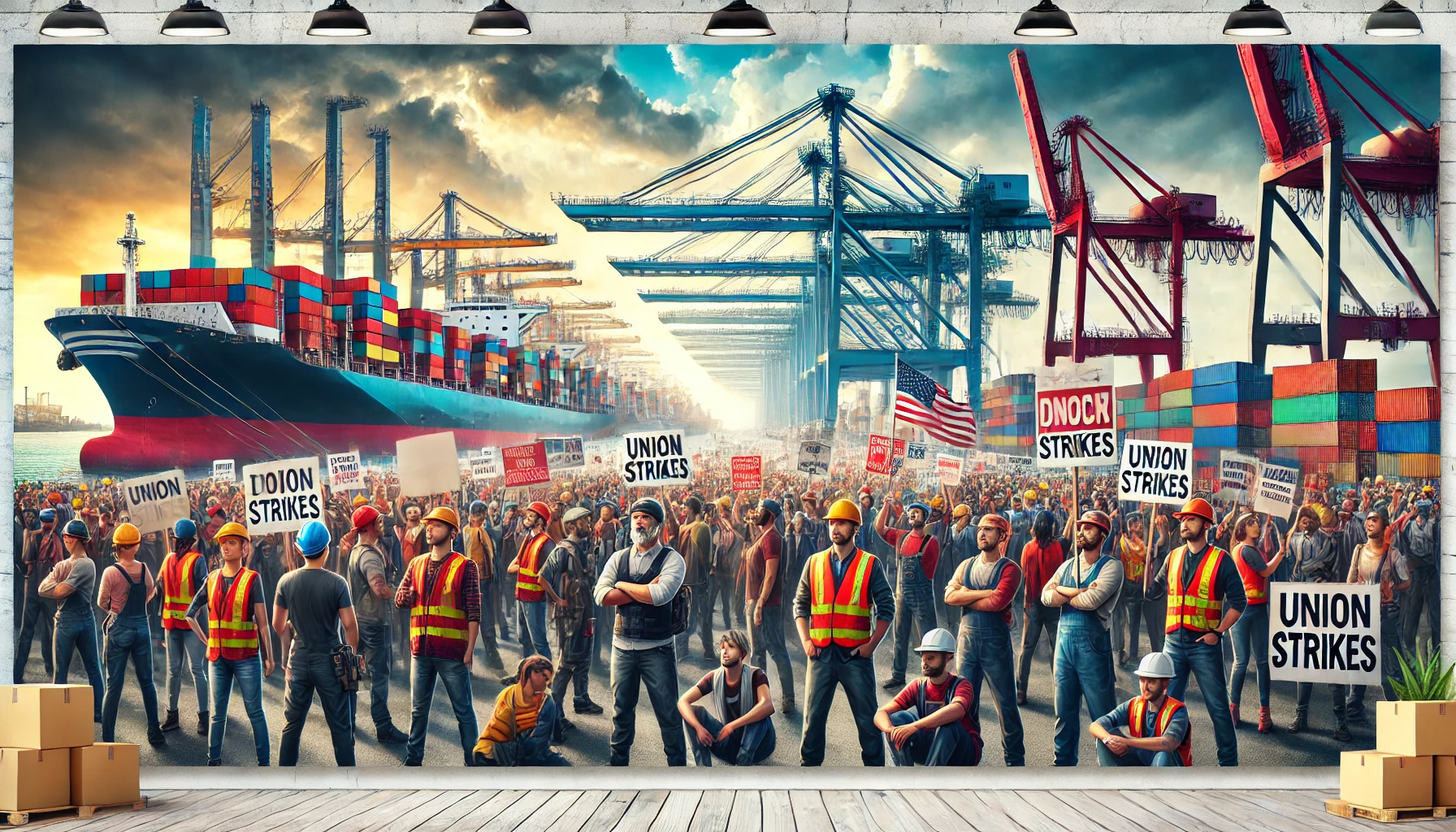The Current State of Union Strikes in the US: Trends, Causes, and Future Outlook for 2024
Union strikes in the US have always been a significant driver of social change, affecting both the economic landscape and workers’ rights. In 2024, union strikes are making headlines again, especially with high-profile events like the Port union strike and Longshoremen strike threatening supply chains. With labor disputes on the rise, understanding the causes, impacts, and future of union strikes is crucial for businesses, workers, and policymakers alike.
In this post, we’ll explore the trends in US labor strikes, their history, and what lies ahead for union strikes in 2024.
Why Union Strikes Are Increasing in 2024
The Surge of US Labor Strikes in 2024
In 2024, the US is witnessing an uptick in US workers strike activity, with industries across the board feeling the pressure of labor unrest. These strikes, ranging from healthcare to logistics, signal a broader dissatisfaction among employees. The root causes are multifaceted, including wage stagnation, inflation, unsafe working conditions, and benefits erosion.
Increased labor action, such as the union strikes US ports, has garnered nationwide attention due to its potential to disrupt key industries and affect the US economy. The Port union strike, for example, threatens to bottleneck supply chains, affecting businesses and consumers alike.
External factors, such as the post-pandemic recovery and inflationary pressures, have only intensified labor disputes. Workers are more aware of their value and are uniting to demand better compensation and working conditions.
Historical Context: How Labor Union Strikes Shaped America
A Brief History of Labor Union Strikes in America
Understanding labor union strikes history provides valuable insight into the current wave of strikes. Union strikes have a long legacy in the United States, dating back to the late 19th century when workers organized to fight for an eight-hour workday and safer working conditions. Events like the 1886 Haymarket Affair and the 1934 West Coast longshoremen strike stand as landmark moments in the labor movement.
These pivotal moments show how critical union strikes have been in pushing for labor reforms that are now considered standard, such as minimum wage laws and the establishment of the weekend. Today’s strikes are part of that long-standing tradition of labor organizing, continuing to advocate for workers’ rights.
For a more detailed look into how labor union strikes have evolved, this article by The Atlantic offers in-depth historical context.
The Impact of Current Union Strikes on the US Economy
How the Longshoremen Strike Disrupts Supply Chains
One of the most visible labor disputes in 2024 is the Longshoremen strike, which could have sweeping effects on the US economy. Longshoremen play a vital role in managing the import and export of goods at major ports, including those on the East Coast and Gulf Coast. With workers walking off the job, businesses are scrambling to find alternative solutions to move goods, while consumers could face product shortages and price hikes.
The Port union strike specifically has created significant delays in shipping, which affects everything from raw materials needed for manufacturing to consumer goods on store shelves. Experts suggest that if the strike continues, it could cost the economy billions in lost productivity and increased costs for imported goods.
Key Factors Driving Union Strikes in 2024
Wages and Inflation
One of the primary drivers of union strikes in 2024 is wage dissatisfaction. With inflation hitting multi-decade highs, workers are finding their paychecks stretched thinner than ever. Many unions are fighting for wage increases that not only reflect inflation but also provide workers with better financial security. The ongoing US labor strikes highlight the stark contrast between corporate profits and stagnant wages for workers.
Working Conditions and Benefits
Apart from wages, other issues like health benefits, work-life balance, and safety in the workplace are critical factors. In industries like healthcare, logistics, and manufacturing, many workers argue that their jobs have become more demanding without adequate compensation. The Gulf Coast port strike reflects these concerns, as workers demand safer working environments and better long-term benefits.
Labor Organizing and Legal Backing
Unions have gained strength in recent years, with increased support from both workers and political leaders. Labor laws have also shifted to give unions more leverage in negotiations. Recent changes to labor laws have made it easier for workers to organize, file grievances, and demand better working conditions. This empowerment is partly fueling the surge in US workers strike activity.
The Role of Port Union Strikes in the Global Economy
Why Port Strikes Matter Beyond US Borders
The union strikes US ports aren’t just affecting the domestic economy; they’re disrupting global trade routes as well. With international imports and exports dependent on US ports, these strikes are sending ripples through the global supply chain. Countries that rely on the US for raw materials, finished goods, or agricultural products are finding their trade routes delayed, leading to shortages and price surges abroad.
The Longshoremen strike in particular has caught the attention of international businesses that are closely monitoring negotiations. Companies dependent on just-in-time supply chains could see delays that impact production timelines and delivery commitments.
What’s Next for Union Strikes in 2024?
Predictions for Union Strikes and Labor Movements
As we look ahead to the remainder of 2024, it’s clear that union strikes US ports and in other industries will continue to play a pivotal role in shaping the US labor landscape. With economic conditions remaining uncertain, and many contracts still up for negotiation, the likelihood of more US labor strikes is high. Industries like healthcare, manufacturing, and logistics are particularly vulnerable to additional strikes.
The Future of Worker-Employer Relations
The labor movement is likely to gain more momentum as workers continue to demand fair wages, safer working conditions, and better benefits. Companies that fail to address these issues could face prolonged disruptions, not only from strikes but also from public backlash and declining morale within their workforce.
It’s essential for businesses to proactively engage with their workers and unions to prevent future labor disputes. By addressing concerns before they reach a boiling point, companies can avoid the costly disruptions caused by strikes and ensure smoother operations moving forward.
Union strikes have been a fundamental part of shaping labor rights in the US, and 2024 is seeing a resurgence in labor action as workers fight for fair wages, better working conditions, and benefits. The Port union strike and Longshoremen strike highlight the growing unrest among workers in critical industries, while the historical context of labor union strikes history reminds us that labor movements are not new.
As businesses and workers navigate the future, it’s clear that the role of unions and strikes will continue to be significant. Companies that adapt to these new labor dynamics and engage with unions in good faith can avoid costly disruptions and build stronger relationships with their workforce.
For more information on worker rights and labor history, visit Regent Studies.



